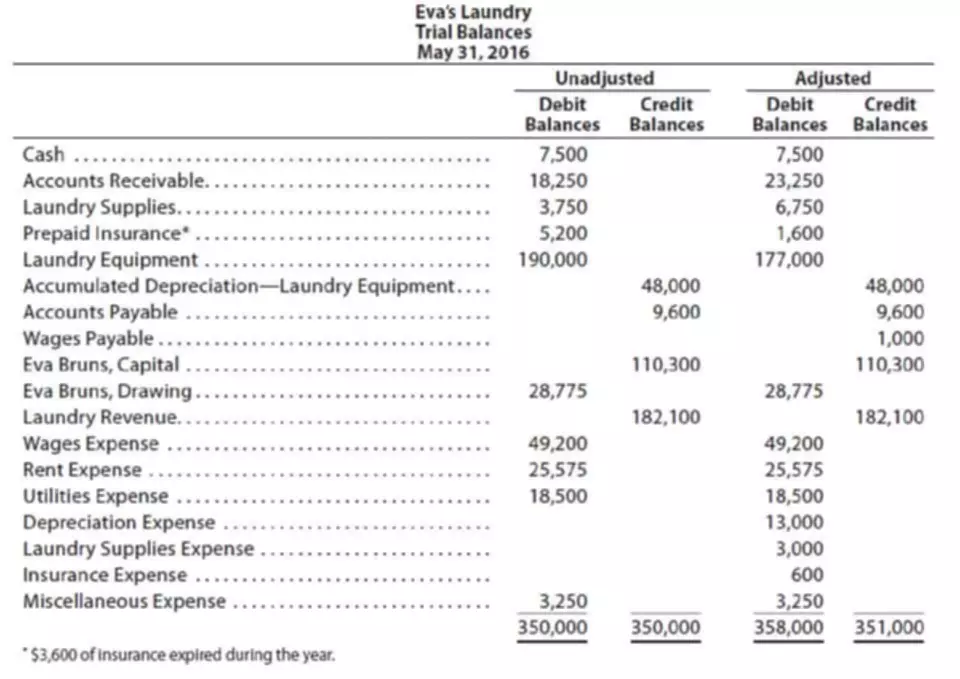Content

The method focuses mainly on income and expenses and doesn’t take equity, assets and liabilities into account the same way that double-entry accounting does. In accounting, a credit is an entry that increases a liability account or decreases an asset account. It is an entry that increases an asset account or decreases a liability account. In the double-entry accounting system, transactions are recorded in terms of debits and credits.

Apply for financing, track your business cashflow, and more with a single lendio account. If your business accounts need to be straightened out first, you may also need to hire a bookkeeper or accountant before investing in a software program. With these advantages, it makes sense to leverage this bookkeeping method for your business. While it will take time to master, there are numerous guides, tutorials, and tips online that can help. Generate your reports in one click by exporting your data and pre-accounting entries to your favourite tools. “It was just a whole revolution in the way of thinking about business and trade,” writes Jane Gleeson-White of the popularization of double-entry accounting in her book Double Entry.
Subscribe to Journal updatesself.__wrap_b(“:Rp5ml6:”,0.
Another example might be the purchase of a new computer for $1,000. You would need to enter a $1,000 debit to increase your income statement “Technology” expense account and a $1,000 credit to decrease your balance sheet “Cash” account. The trial balance labels all of the accounts that have a normal debit balance and those with a normal credit balance. The total of the trial balance should always be zero, and the total debits should be exactly equal to the total credits. In keeping with double entry, two (or more) accounts need to be involved.

While you can generate an income statement from this type of system, you will be severely limited in your ability to track liabilities and assets. Because the accounts are set up to check each transaction to be sure it balances out, errors will be flagged to accountants quickly, before the error produces subsequent errors in a domino effect. Additionally, the nature of the account structure makes it easier to trace back through entries to find out where an error originated. As a company’s business grows, the likelihood of clerical errors increases. Although double-entry accounting does not prevent errors entirely, it limits the effect any errors have on the overall accounts. The total amount of the transactions in each case must balance out, ensuring that all dollars are accounted for.
Equity Account
A credit is that portion of an accounting entry that either increases a liability or equity account, or decreases an asset or expense account. A debit is that portion of an accounting entry that either increases an asset or expense account, or decreases a liability or equity account. In double-entry bookkeeping, debits and credits are terms used to describe the 2 sides of every transaction. Debits are increases to an account, and credits are decreases to an account. Single-entry bookkeeping allows for transactions to be recorded in one account. After which you will record the same transaction in another account book or journal, but this time you will credit the expense account and debit another asset account.
- Single-entry and double-entry accounting are both methods of record-keeping for companies’ financial transaction data.
- If a business buys raw materials by paying cash, it will lead to an increase in the inventory (asset) while reducing cash capital (another asset).
- The vehicle, which is an asset, increased and was recorded on the debit side while the cash account which was used to buy the vehicle was reduced and this was recorded on the credit (right) side.
- That’s a win because financial statements can help you make better decisions about what to spend money on in the future.
- If you’re the owner of a small business and you wish to apply for a loan, you will need to show an accurate picture of the financial health of your business.
- If the equation is true, you’re satisfying the requirements of double-entry accounting and your records are probably accurate.
However, you still have to record journal entries for transactions that the software can’t pick up automatically, such as non-cash expenses. For example, you must record depreciation to track the cost of wear and tear on your physical assets, but it’s not an expense you pay for with cash or credit. Double-entry accounting is a practice used by accountants to ensure that books balance out. Each transaction must have a debit entry and a credit entry and the total of the debit entries must equal the total of the credit entries. It can take some time to wrap your head around debits, credits, and how each kind of business transaction affects each account and financial statement. To make things a bit easier, here’s a cheat sheet for how debits and credits work under the double-entry bookkeeping system.
The Double-Entry Accounting System
Double-entry accounting is the most popular method of documenting a business’ financial activities. When using it, all transactions you record must affect at least two accounts, hence the name, and balance between debits and credits. A debit entry will increase the balance of both asset and expense accounts, while a credit entry will increase the balance of liabilities, revenue, and equity accounts. In use for hundreds of years, double-entry is an accounting system that operates on the principle that every financial transaction impacts at least two accounts, either as a debit or as a credit. The main premise of double-entry accounting is that a company’s financial health is sufficient if its debits and credits remain balanced at all times.
Each of these two-line entries is known as a general journal entry. In this case, the asset that has increased in value is your Inventory. Because you bought the inventory on credit, your accounts payable account also increases by $10,000. The system is designed to keep accounts in balance, reduce the possibility of error, and help you produce accurate financial statements.
Use accounting software
Even the smallest business can benefit from double-entry accounting. The best way to get started with double-entry accounting is by using accounting software. Many popular accounting software applications such as QuickBooks Online, FreshBooks, and Xero offer a downloadable demo you can try. If you’re ready to use double-entry accounting for your business, you can either start with a spreadsheet or utilize an accounting software. If you were using single-entry accounting, you would simply reduce your bank account balance by $500. If you’d only entered the $200 as a deposit, your bank account balance would be accurate, but your utility expense would be too high.
- Essentially, the representation equates all uses of capital (assets) to all sources of capital (where debt capital leads to liabilities and equity capital leads to shareholders’ equity).
- The key feature of double-entry is that the two columns must balance.
- However, satisfying the equation does not guarantee a lack of errors; the ledger may still “balance” even if the wrong ledger accounts have been debited or credited.
- Journal transactions are then transferred and entered twice in the ledger as offsetting debits and credits.
- While you can certainly create a chart of accounts manually, accounting software applications typically do this for you.
These are known as bookkeeping entries, and they appear in equal but opposite amounts. One entry shows the source of money of each transaction, and the other entry shows the money’s destination. The double-entry system displays two columns for these entries, called debits and credits.
All financial statements whether a balance sheet, income statement or a cash flow statement use the double-entry system for efficiency and accuracy of financial transactions recorded. When making these journal entries in your general double entry accounting meaning ledger, debit entries are recorded on the left, and credit entries on the right. All these entries get summarized in a trial balance, which shows the account balances and the totals of your total credits and total debits.
Tinggalkan Balasan